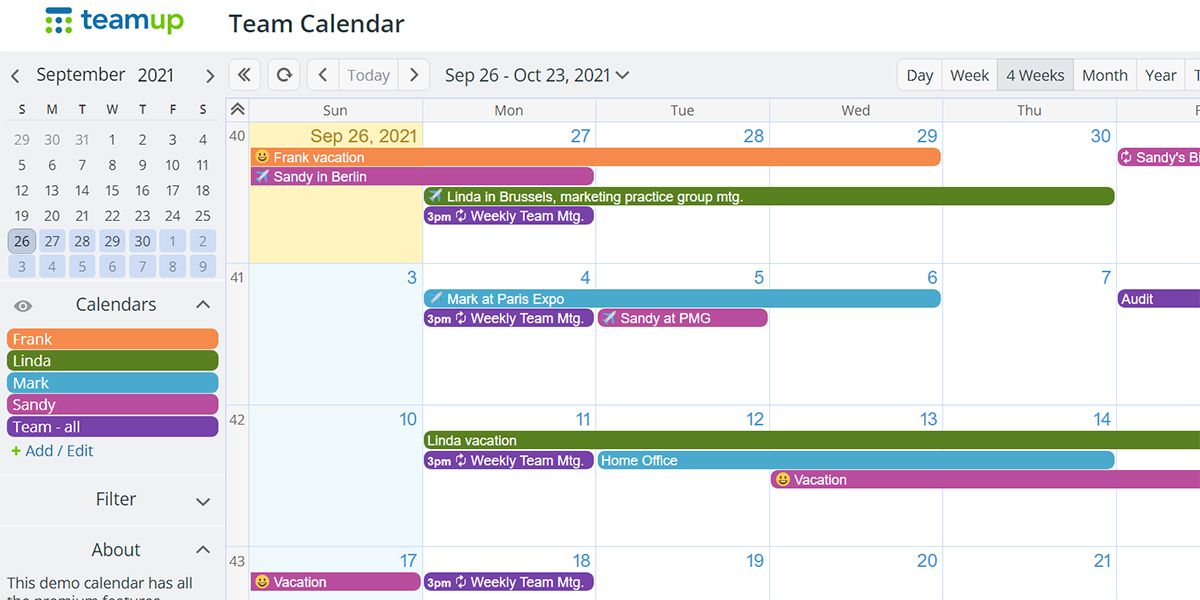As a freelancer or remote worker, you may have to work with clients and colleagues in various time zones. However, this doesn’t mean you always have to be available for real-time response, even at the cost of losing your focus and concentration.
You can avoid exhaustion while maintaining a smooth relationship with other stakeholders by implementing several strategies. Find out how to do this with the following tips and tools.
1. Follow-Up-less Decision/Feedback Sharing
You'll need real-time communication when there is a need for immediate feedback or follow-up. Over-communication can spare you from the hassle of being available all the time for a quick response. If you provide all the necessary information to your client or colleagues, they don't need to follow up to clarify your message.
For that, don’t shy away from explaining things in full description. Sometimes, immediate feedback is not appropriate or complete. It can also cause misunderstandings. Delayed feedback helps you avoid illogical outbursts and allows you to provide more thoughtful responses.
By communicating thoroughly and clearly with your clients and team, unnecessary back-and-forth is avoided. There are various online note-taking apps, such as Supernotes. You can use them to accomplish near-perfect messaging.
You and your collaborator can leave notes on the same file after going through each other’s responses through shareable notes and documents.
2. Plan Ahead to Allow Reasonable Delay in Response Time
Some projects and tasks may need an immediate response from your clients or team members, whereas a late reply may result in project delay. It is one of the main reasons why many people advocate for real-time communication while working remotely.
However, asynchronous communication is also a feasible option in these cases if you can plan the tasks and subtasks. Invest sufficient time to create an escalation workflow that will let your team deal with emergencies. Consider the time zone difference and schedule independent tasks during the response delay.
It’ll be helpful to integrate the calendar app with the task management tools like Asana. Thus, every time you create an event, the update will become available in the task management apps for everyone to follow.
3. Screen Recording/Digital Whiteboards to Demonstrate Bugs
Imagine there is a complex bug in the software. Now, you need to describe the whole thing through writing to a remote team! Not to mention the questions popping up in between from the other end, and you're getting lost.
You can avoid all these complicated situations using screen recorder apps. Demonstrate and record the software bug using a free screen recorder like ActivePresenter or Apowersoft. You can also include your audio to describe the issue verbally to avoid any confusion.
You can also use online whiteboards like Freehand to describe app or website bugs. These apps are good for remote collaboration. Your colleague can work on your whiteboard file and leave notes there so that you can review it when it’s your turn.
4. Create Digitally Accessible Workflows With Comments
The more you can reduce the need for audio/video communication, the more colleagues and clients will be able to concentrate on what really matters. In the present time, you can easily create a detailed workflow of your project and make it digitally accessible to everyone else involved. To do that, you can use collaboration applications like Jira.
Besides supporting the visual workflow of your tasks, these comprehensive apps let you add comments to the tasks. These comments help to find the required information quickly and thus streamline the discussions.
For example, if the client needs to know about the project progress, they can look into the task comment to find out completed tasks. It saves them from sending messages to you while instantly serving them with the information they need.
5. Create & Define Sprints for Projects
If you’re a part of a team that follows an agile or scrum workflow, you know that real-time collaboration and communication are indispensable parts of your work. Still, you can reduce the dependency on immediate communication by defining the sprints properly.
While creating a sprint, make sure you answer the obvious questions like the goals or objectives, roadmaps, resources, backlogs, capacity, work process, deadlines, etc. Thus, the assignees don’t ask you those questions and start working immediately.
You can also take help from different free Scrum-supported project management tools like iceScrum. These apps let your teamwork efficiently with the minimum requirement of urgent response.
6. Distribute Meeting Recordings to Minimize Video Meeting Fatigue
At times, being part of a remote team means attending an array of meetings to compensate for the physical distance. It can lead to a situation called Zoom fatigue, which is not good for your productivity. Instead, you can focus on alternate communication channels and decline the meeting requests during focused work.
It’s essential to attend the meetings for strategic discussions or focused agendas. Nevertheless, you can depend on text-based communication to resolve most of the remaining matters. Apart from this, recording meetings should be mandatory.
Thus, anyone who missed it can check the recording conveniently for insights and might add value to the discussion later. You can use VLC for recording Zoom meetings, or the recording feature of Google Meet to record Meet meetings. Both these apps are free, so they don't cost you any extra bucks.
7. Utilizing Digital Calendar in the Right Way by Blocking Time
One of the main reasons for choosing non-voice communication is to have an uninterrupted productive time. Though this helps us make significant progress on a project or task, people don’t mark this in the calendar like they mark a meeting or presentation. As a result, other team members usually have no clue about it.
However, you can mark the time for some deep work into your calendar for others to know about it. Calendar whitespace means you are free for a meeting or texting. If you block the time in the calendar, they will refrain from scheduling meetings or sending you texts at that time.
You can use free calendar tools like Google calendar or TeamUp to block your time. Therefore, others will become considerate and depend more on online communication like email and project discussion channels.
Communications Don’t Always Have to Be Instantaneous
While you’re working from home or a part of a hybrid team, real-time communication can take a toll on you.
Try these tips and tools for online communication to avoid being overwhelmed. As these let you work without interruptions, you’ll see a boost in your daily productivity.


